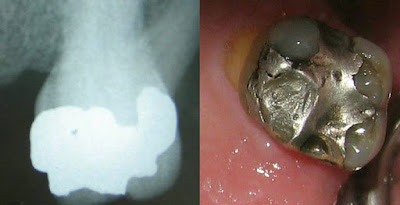A. Submandibular gland
B. Parotid gland
C. Sublingual glands
D. Lingual glands
# In the clinical evaluation, the most significant finding of the parotid mass may be accompanying:
A. Rapid progressive painless enlargement
B. Nodular consistency
C. Supramental and preauricular lymphadenopathy
D. Facial paralysis
# Which of the following statements is false?
A. A salivary duct obstruction can cause a unilateral swelling in the floor of the mouth that is largest before a meal and smallest after a meal
B. A lesion termed as ranula is associated with the sublingual salivary gland
C. The sublingual salivary gland is the most common site of salivary gland neoplasia
D. A pleomorphic adenoma is the most common salivary gland neoplasm
# Warthin's tumor is :
A. An adenolymphoma of the parotid gland
B. A pleomorphic adenoma of the salivary gland
C. Carcinoma of the parotid gland
D. None of the above
# The common site for necrotising sialometaplasia is :
A. Cheeks
B. Dorsum of tongue
C. Palate
D. Gingiva
# Pleomorphic adenoma arises from:
A. Myoepithelial cells
B. Acinar cells
C. Connective tissue
D. Stem cells
# Most common salivary gland malignant neoplasm in bones is :
A. Pleomorphic adenoma
B. Adenoid cystic carcinoma
C. Mucoepidermoid carcinoma
D. Adenolymphoma
# Mikulicz's disease is :
A. An inflammatory disease
B. Neoplastic disease
C. An autoimmune disease
D. Viral infection
# Bimanual palpation technique is carried out for:
A. Submandibular gland
B. Sublingual gland
C. Ranula
D. Cervical lymph nodes when they are enlarged due to inflammation
# Non inflammatory , non neoplastic enlargement of the salivary gland is termed as:
A. Sialadenitis
B. Sialosis
C. Ptyalism
D. Sialorrhoea
# Most common tumor of salivary gland is :
A. Pleomorphic adenoma
B. Adenoid cystic carcinoma
C. Cylindrioma
D. Epidermoid carcinoma
# A painful crater-like 1.5 cm ulcer develops within one week on the hard palate mucosa of a 40 year old female. The most likely diagnosis is :
A. Actinomycosis
B. Squamous cell carcinoma
C. Pleomorphic adenoma
D. Necrotizing sialometaplaisa
# A condition of the mouth which increases the caries activity in the oral cavity is :
A. Xerostomia
B. Malignancy
C. Hairy tongue
D. Watery saliva
# Which of the following parotid malignancy shows perineuronal spread ?
A. Pleomorphic adenoma
B. Adenoid cystic carcinoma
C. Warthin's tumor
D. Ductal papilloma
# Which of the following is of salivary gland origin ?
A. Acinic cell carcinoma
B. Granular cell myoblastoma
C. Chondrosarcoma
D. All of the above
# Reduction in flow of saliva is not generally seen in :
A. Elderly diabetics
B. Patient undergoing radiation therapy
C. Patients suffering from parkinsonism
D. Patients on phenothiazine drugs
# Sialography is used to detect anomaly of:
A. Salivary duct only
B. Salivary gland
C. Salivary gland and duct
D. Salivary gland tumors
# Acute non suppurative sialadenitis is seen in:
A. Acute bacterial sialadenitis
B. Mumps
C. Chronic bacterial sialadenitis
D. Necrotizing sialometaplasia
# A cyst occurs under the tongue, caused by obstruction of a salivary gland. Such a cyst is called :
A. Mucocele
B. Ranula
C. Dermoid cyst
D. Dentigerous cyst
# Mucocele most commonly arise as a result of :
A. Rupture of a salivary gland
B. Partial or complete compression of the salivary acini
C. Inflammatory changes in the glandular interstitial tissue
D. Partial or complete obstruction of the salivary duct by calculus
REVISE THESE MCQs in THIS VIDEO



